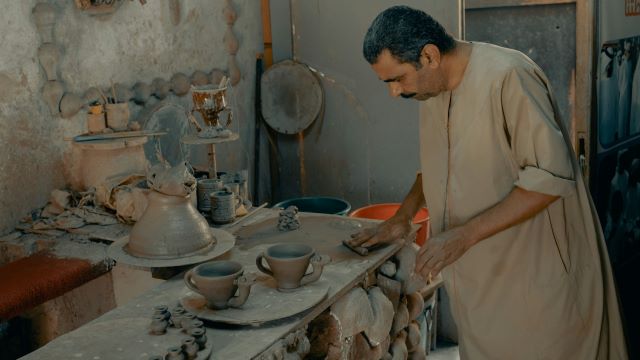In the narrow lanes of Tlemcen’s old medina, the scent of tanned leather mingles with the metallic ring of a hammer against copper. Beneath a low archway, a potter’s wheel spins steadily, coaxing wet clay into forms that echo centuries-old designs. Across Algeria, such scenes remain part of daily life—pockets of artistry where traditional craft survives, often against considerable odds.
Artisans here work with an intimacy of material and method that ties their creations to the land itself. Clay drawn from local riverbeds, wool shorn from highland sheep, and timber from regional forests are transformed into objects of both beauty and function. In Kabylie, woodcarvers incise geometric and floral motifs rooted in Berber symbolism, their chisels tracing patterns passed down through generations. In the Sahara, women weave vivid textiles whose colors mirror the desert’s shifting light.
Markets in Algiers, Constantine, and Oran bustle with this diversity—stalls laden with hand-tooled leather satchels, silver filigree jewelry, and ceramics glazed in deep cobalt and amber tones. Each piece carries the imprint of its maker’s hand, a tangible link to traditions that predate colonial rule and industrial manufacture. The artistry is often as much about preservation as it is about commerce.
Yet the work persists in a landscape of challenges. Mass-produced imports crowd shelves, offering cheaper alternatives that erode the market for handcrafted goods. Younger generations, drawn to urban employment, can be reluctant to take up time-intensive trades. In response, cooperatives and cultural associations have emerged to bolster the sector, providing training, microloans, and international exhibition opportunities. These initiatives aim not only to sustain livelihoods but to embed Algerian craft within contemporary design conversations.
For many artisans, the act of making remains a declaration of continuity. A Kabylie woodworker might echo the same carved lines his grandfather cut decades earlier; a potter in Ghardaïa might still glaze in the traditional patterns of the M’zab valley. Such work is slow, deliberate, and resistant to the pace of mass production. In this, it mirrors the endurance of the culture itself—adaptable enough to meet the present, rooted deeply enough to carry the past forward
Sources:

